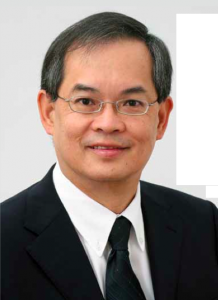 In 2010, according to the “Fiber Year 2011 Report”, the textile
In 2010, according to the “Fiber Year 2011 Report”, the textile
industry experienced its strongest growth in 25 years: 80.8 million
tons of natural and synthetic fibers were produced, 6.4 million tons
or 8.6 per cent more than in 2009, and the growth will continue.
Demand growth, particularly for clothing and home textiles, is in
direct proportion to increases in the standard of living in emerging
markets such as India and China. The fashion industry cycles are
setting new trends in increasingly shorter cycles. Another key driver
is the range of innovations being made in the area of synthetic
fibers. These fibers have highly distinctive characteristics and meet
a wide variety of demands. These include resistance to soiling,
outstanding cleaning performance, exceptional thermal insulation,
breathability, durability and strength. These qualitative trends
require new, innovative textile machines with high efficiency and
flexibility.
Although up to 85 per cent of today’s textile products originate from
China, this powerhouse no longer produces solely for export: the
domestic market is strong and is growing, and quickly. In 2000, the
country produced only 6.7 million tons of synthetic fibers. In 2011,
this figure rose to 30 million tons, or 40 per cent of worldwide
production.
How Oerlikon participates
The major textile producers in China and other key producing countries
such as India, Turkey, Pakistan and Bangladesh share a common
challenge: rising labor, raw materials and energy costs mean
cost-effective ways to boost operational efficiency must be found.
Oerlikon Textile addresses this critical customer need by supplying
innovative equipment and solutions. The product line includes the most
efficient machines of their kind and ranges from ring and rotor
spinning machines, winding machines and equipment for manufacturing
and finishing continuous fibers and for producing nonwovens to systems
for embroidery and twisting.
Oerlikon is exceptionally well-positioned in China, the largest
textile market in the world, and benefits from the continued growth in
that country. The segment is managed from Shanghai and therefore
firmly rooted in this key market. This will prove ever more important
if, as expected, certain production steps gradually relocate to the
interior of the country and away from the coastal regions.
Oerlikon Textile will especially benefit from the development of the
textile industry in these regions as well as from the trend toward
cutting-edge technical textiles with highly distinctive
characteristics. The segment is the worldwide market and technology
leader and will be the first to drive innovations and to satisfy
demand. Oerlikon is the leader in melt spinning machines for the
manufacture of synthetic fibers as well as in texturing machines for
finishing these fibers. It is also the preferred partner for spinning
mills that produce high-quality yarns from such natural fibers as
cotton.
The segment’s spinning and winding machines, for instance, offer these
spinning mills significantly improved productivity with a lower level
of energy consumption. The equipment’s ergonomic design also lowers
workforce requirements and maintenance costs, which helps operators to
be more competitive.